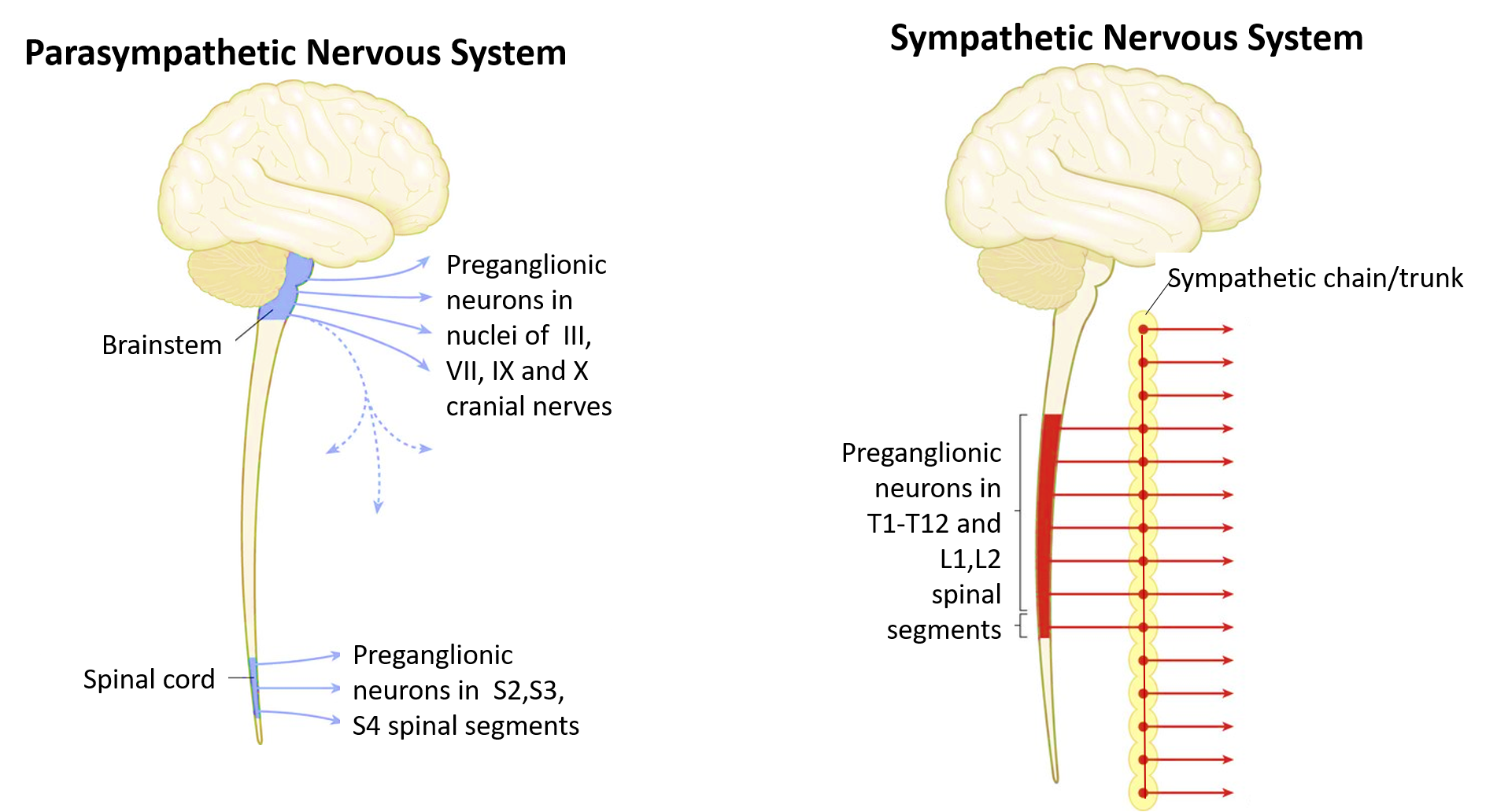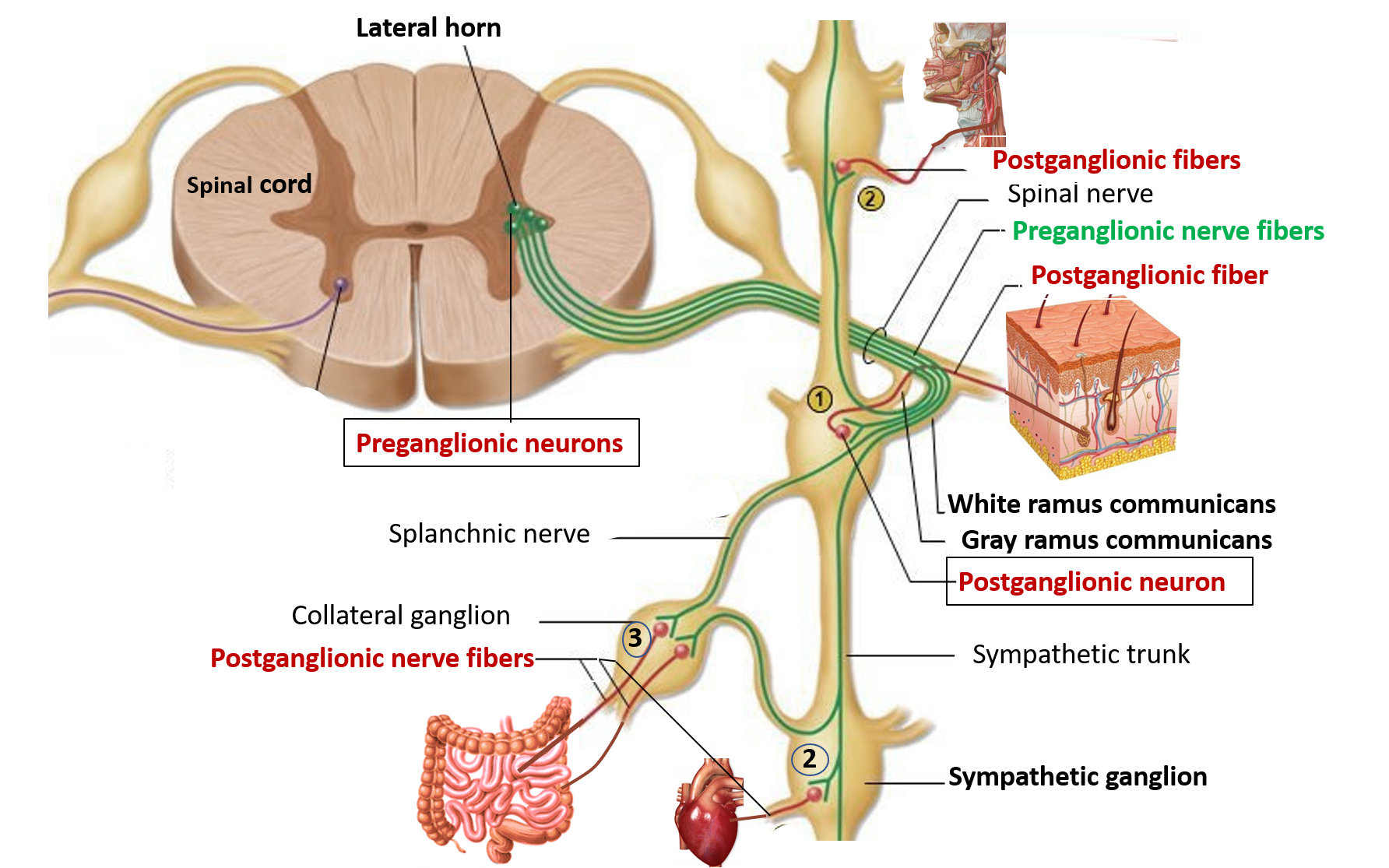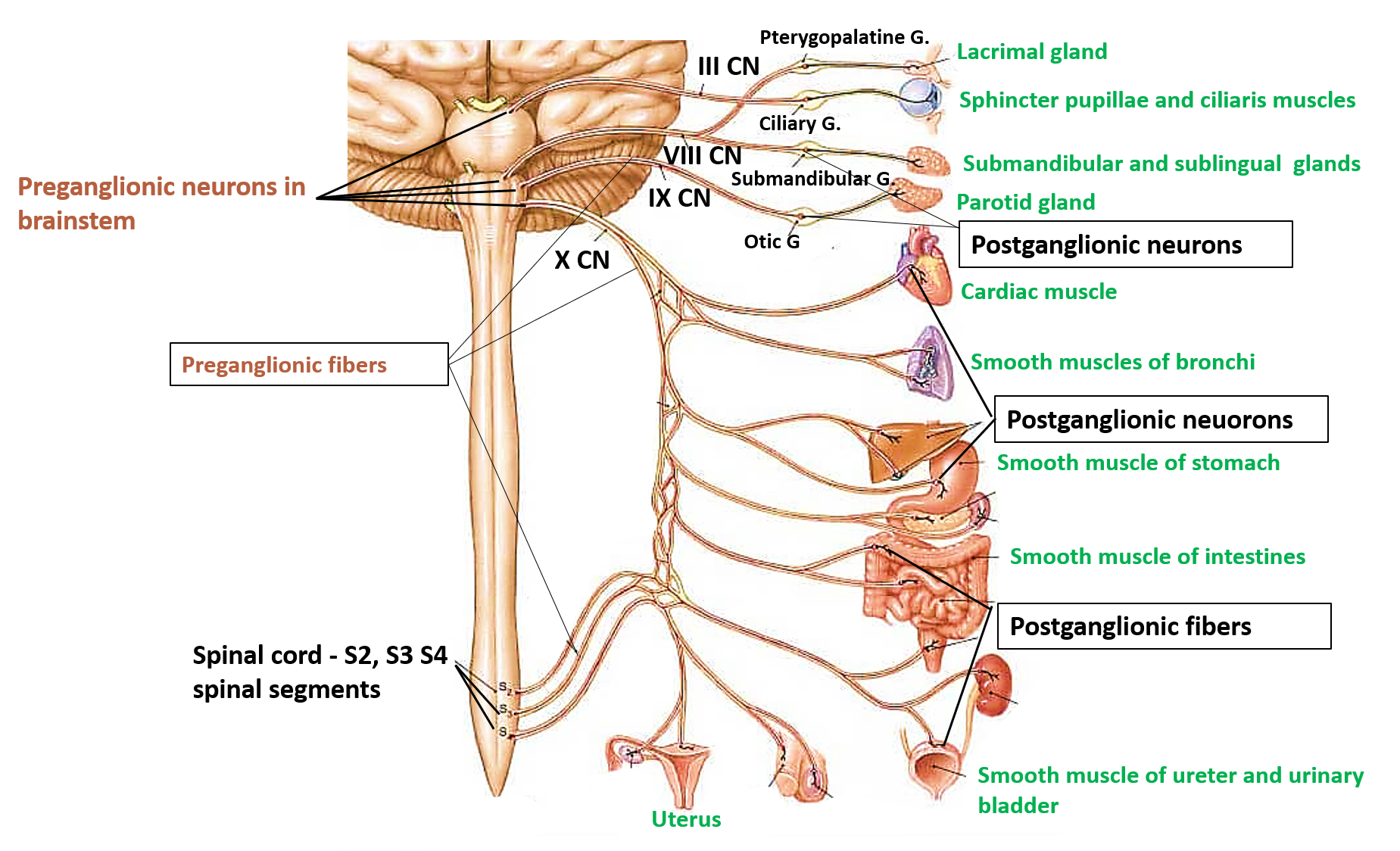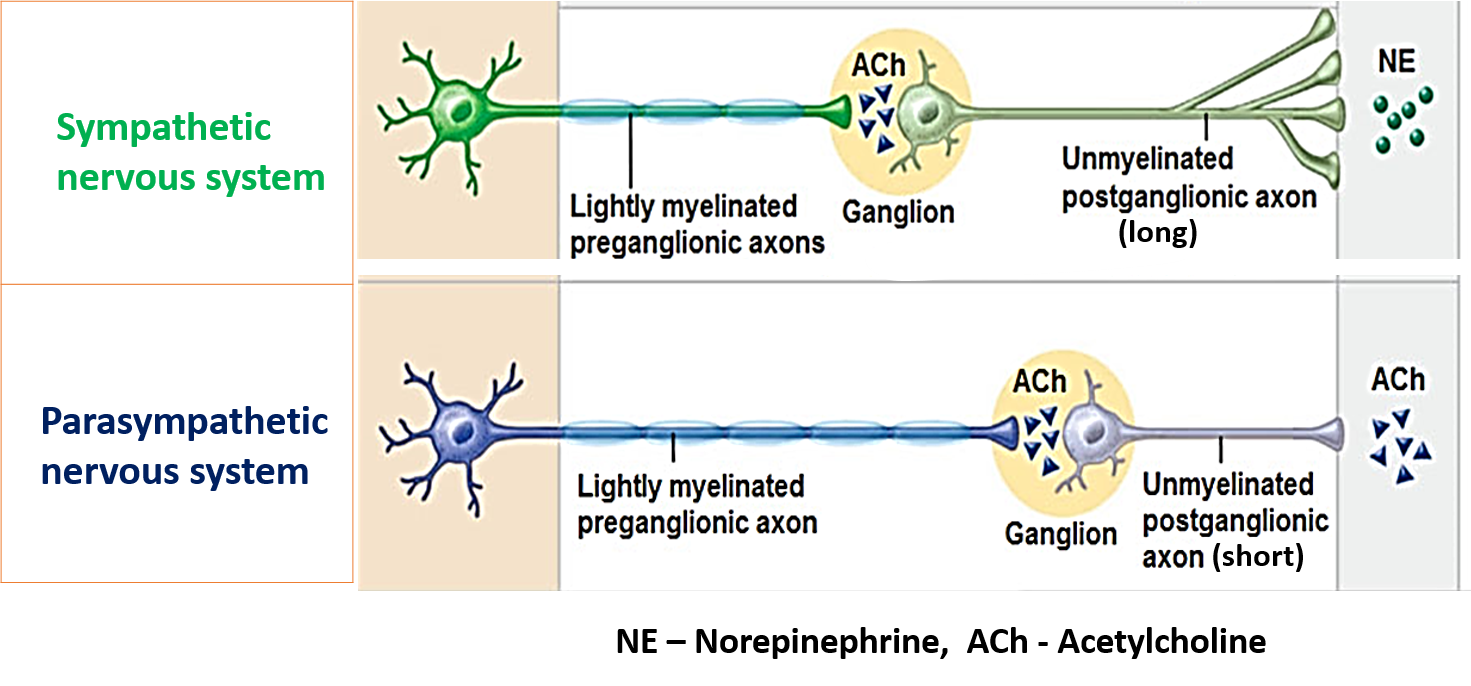Advertisements
What are the functions and subdivisions of Autonomic Nervous System?
Autonomic nervous system (ANS):
- Controls involuntary activities of the body.
- It helps to maintain a constant internal body environment (homeostasis).
- It controls the activity of cardiac muscle, smooth muscle and glands.
- It is dived into two subdivisions that have opposing actions. The subdivisions are :
- Sympathetic nervous system (thoraco-lumbar in origin)
- Parasympathetic nervous system (cranio-sacral in origin)

Describe briefly Sympathetic Nervous System.
The sympathetic nervous system is thoraco- lumbar in origin.
Preganglionic fibers
- Arise from the lateral horns of T1- L2 spinal segments.
- They are myelinated.
- They first pass in the ventral root and then the ventral ramus of T1- L2 spinal nerves.
- They then leave the ventral ramus to form white ramus communicans and reach the sympathetic ganglion.
- On entering the ganglion, the fibers may
- Synapse in the corresponding sympathetic ganglion.
- Pass up or down in sympathetic trunk to synapse with neurons in sympathetic ganglion located at higher or lower level.
- Pass through the sympathetic trunk ganglion without synapsing, form splanchnic nerves and reach one of the collateral sympathetic ganglion in abdomen such as coeliac or superior mesenteric ganglion.

Postganglionic fibers
- They are unmyelinated fibers.
- Most of them arise from the sympathetic ganglion of sympathetic trunks (few in abdomen from the colletral ganglion).
- Fibers from the sympathetic ganglion of trunk form the gray ramus communicans and join the spinal nerve and are:
- vasomotor (contraction of smooth muscles in arteries)
- pilomotor (contraction of arrector pili muscle),
- sudomotor (secretomotor to sweat glands).
* Other actions of sympathetic nervous system are presented in tabulated form in lower section of this post.
Describe briefly Parasympathetic Nervous System.
The parasympathetic nervous system is cranio-sacral in origin.
Preganglionic fibers:Arise from
- The nuclei (located in brainstem) of four cranial nerves viz:
- oculomotor (IIIrd CN),
- facial (VIIth CN) ,
- glossopharyngeal (IXth CN),
- vagus nerves (Xth CN) and
- Lateral horns of S2, S3, S4 spinal segments.
- They are myelinated.
- Preganglionic fibers from the IIIrd , VIIth and IXth cranial nerves pass along their branches to reach the four parasympathetic ganglia in head & neck region viz. ciliary ( IIIrd CN), pterygopalatine and submandibular (VIIth CN ), and otic (IXth CN) ganglia.
- The preganglionic fibers from the vagus and sacral spinal segments pass directly to the viscera and synapse with the neurons located in their walls (in the Meissner’s and Aurbach plexus in GIT) or ganglia located close their walls.

Postganglionic fibers
- They are unmyelinated fibers.
- Postganglionic fibers from the parasympathetic ganglia in head & neck reach the salivary and lacrimal glands , intraocular muscles via branches of trigeminal nerve.
- Postganglion fibers arise from the ganglion located near on the walls of the viscera and are very short.
*Other actions of sympathetic nervous system are presented in tabulated form in lower section of this post.
What are the actions of sympathetic and parasympathetic nervous system on various viscera?
| Sympathetic nervous system | Parasympathetic nervous system |
|---|---|
| Is involved in fight, fright or flight reactions. | Conserves body energy |
| Involved in ‘E’ activities-Exercise, Emergency, Excitement, Embarressment. | Involved in ‘D’ activities- Digestion , Defeacation, Diuresis |
| Increases heart rate | Heart rate decreased |
| Raises blood pressure | Blood pressure decreased |
| Dilation of bronchi, increases respiratory rate | Constriction of bronchi, decreases respiratory rate |
| Dilates pupil | Pupils are constricted |
| Suppresses peristaltic movements of intestines | Stimulates peristaltic movements of intestines |
| Increase ssweat secretion | |
| Constriction of blood vessels |

<
What are the differences between the Sympathetic and Parasympathetic Nervous System?
| Sympathetic nervous system | Parasympathetic nervous system | |
|---|---|---|
| Origin of nerves | Thoraclumbar | Craniosacral |
| Length of pre-ganglionic fibers | Long | Short |
| Length of post ganglionic fibres | Short | Long |
| Position of ganglion | Away from the organ | Near the organ |
| Neurotransmitter | Acetylcholine and Epinephrine. & Nor epinephrine. | Acetylcholine |

